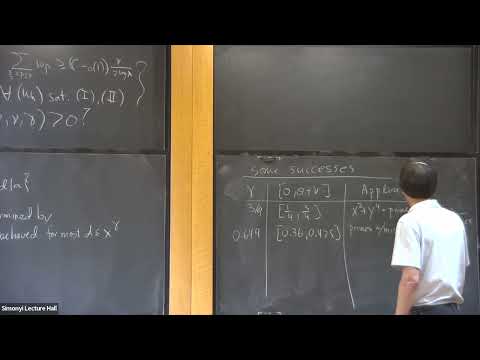Abstract
Given a set of integers, we wish to know how many primes there are in the set. Modern tools allow us to obtain an asymptotic for the number of primes, or at least a lower bound of the expected order, assuming certain strength Type-I information (the distribution of the sequence in progressions) and Type-II information (bilinear sums over the sequence). The methods used previously, especially Harman's sieve, are largely ad-hoc and shed little light on the limitations of the methods. In joint work with James Maynard, we develop a systematic framework for understanding the theoretical limits of these prime detecting sieves, which allow us, in principle, to answer these questions for any given Type I and Type-II information.
